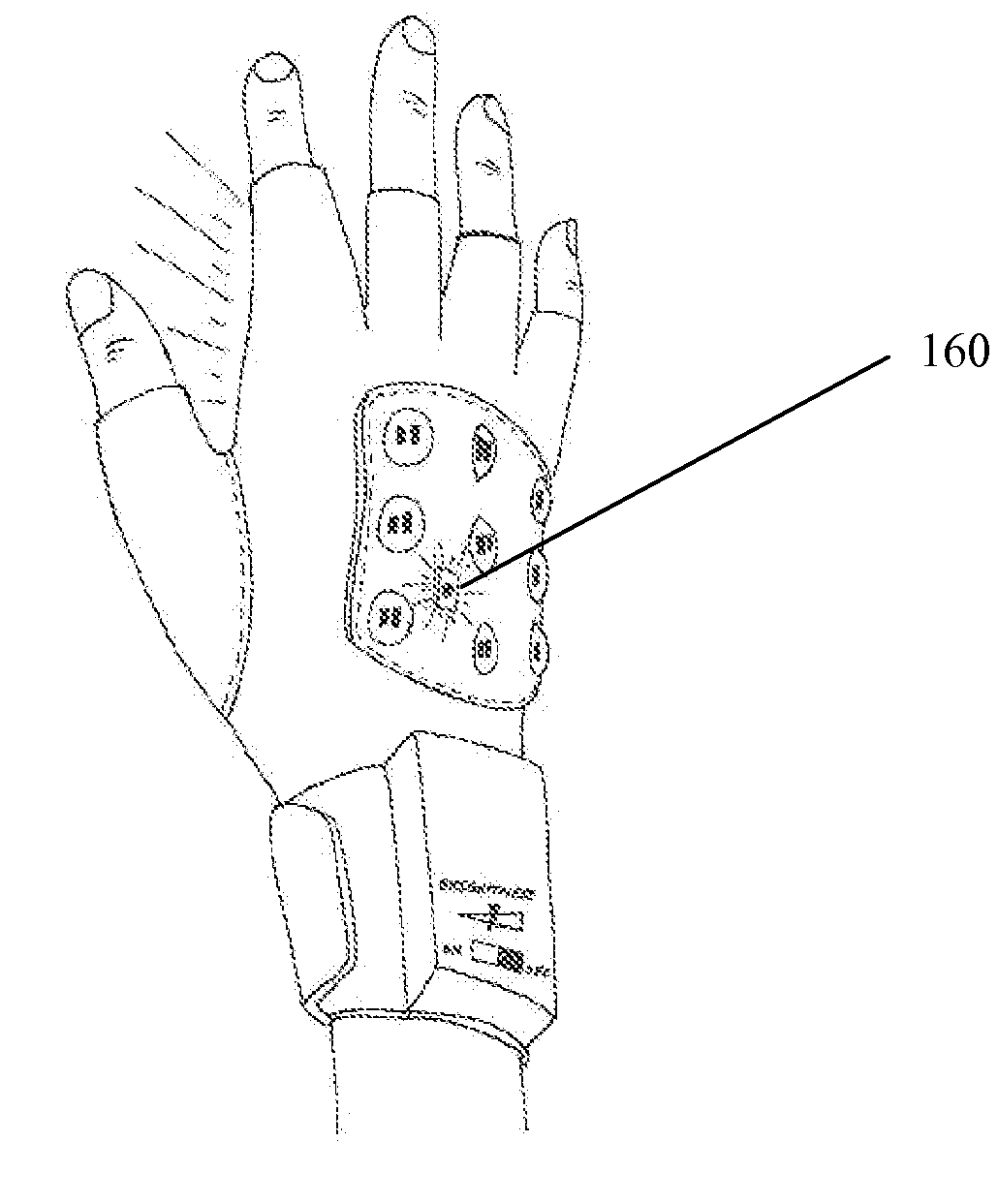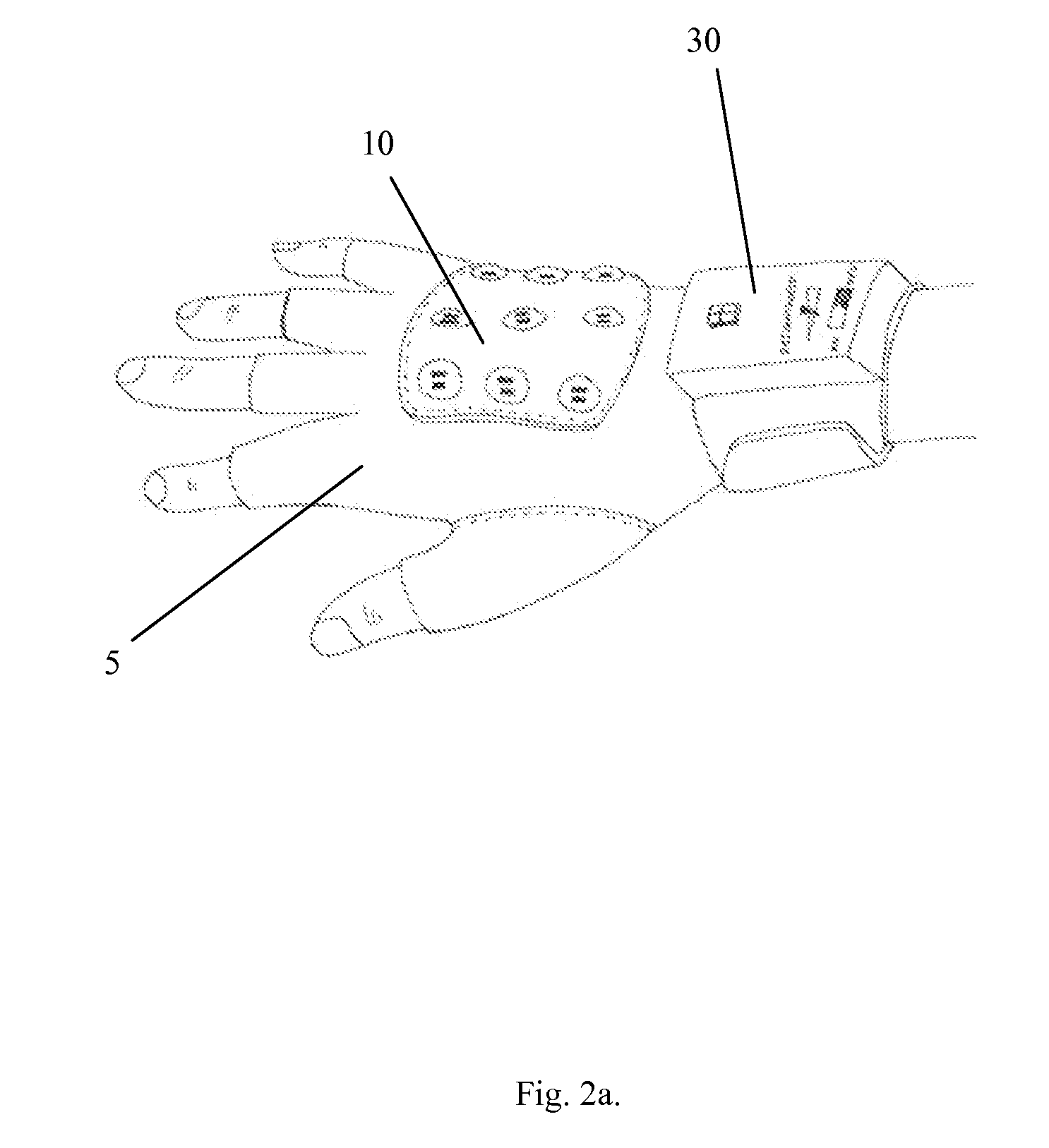Hand-Worn Signaling Device
a signaling device and hand-worn technology, applied in the direction of lighting support devices, instruments, lighting and heating apparatuses, etc., can solve the problems of unnecessarily slowing the flow of traffic, less effective at communicating traffic commands to drivers, and dangerous tasks
- Summary
- Abstract
- Description
- Claims
- Application Information
AI Technical Summary
Benefits of technology
Problems solved by technology
Method used
Image
Examples
Embodiment Construction
[0042]As illustrated in FIG. 1, when a traffic control officer makes a “stop” gesture, the palm of his or her hand is facing the person in front of him or her; when the officer makes a “move along” gesture, the back of his or her hand is facing the person in front of him or her. The present invention is a wearable device that will improve driver comprehension of these gestures by illuminating the hand surface visible to the driver with a red light when the officer makes a “stop” gesture and with a green light when the officer makes a “move along” gesture. Such an invention can also be used for guiding airplanes to the appropriate airport gate, military applications, or any other applications requiring communication with hand signals in dark environments.
[0043]FIGS. 2(a) and 2(b) show the basic construction of one embodiment of the invention. The light-emitting assembly 10 (the “dorsal light-emitting assembly”) is located on the dorsal side of the hand and emits a green light when ac...
PUM
 Login to View More
Login to View More Abstract
Description
Claims
Application Information
 Login to View More
Login to View More - R&D
- Intellectual Property
- Life Sciences
- Materials
- Tech Scout
- Unparalleled Data Quality
- Higher Quality Content
- 60% Fewer Hallucinations
Browse by: Latest US Patents, China's latest patents, Technical Efficacy Thesaurus, Application Domain, Technology Topic, Popular Technical Reports.
© 2025 PatSnap. All rights reserved.Legal|Privacy policy|Modern Slavery Act Transparency Statement|Sitemap|About US| Contact US: help@patsnap.com



